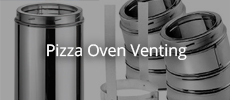Announcement
Collapse
No announcement yet.
My first WFO design, any comments before I build?
Collapse
X
-
Use homebrew. I did too. Works fine. Only patch where the floor bricks (but don't lay the bricks) will be and/or the dome. Use a slighty wetter than normal mix to enable troweling.
-
david sOriginally posted by david s View Post
Ah ok so wet curing can also be done with perlite concrete. Didn't know that!
Today I did a compression test of the perlite concrete. First my girlfriend (about 60kg) stood on it and then I did. I weigh about 105kg. The concrete was hard enough to carry us.
One thing that stood out is that there are quite some loose top grains of perlite. I uploaded a video to imgur showing this: brittle perlite
Should I fix this before I start laying fire bricks on it? Some fixes I thought of:
- Patch with perlite concrete with more cement
- Patch with homebrew
Any ideas?
Leave a comment:
-
Following earlier your earlier advice I will wait at least a week before I will start laying the fire bricks on the perlite concrete. But what is the significants of the water content after the three first days when it is not going to get harder? Should you try to get more of the water out before you lay bricks on it? should you cure it with small fires etc? Or can I just start putting fire bricks on to after 7 days?Originally posted by david s View Post3 days should see it about as hard as it's going to get, but it'll need plenty more to dry out, see drying experiment.
[ATTACH]n439287[/ATTACH]
Cheers!
Leave a comment:
-
3 days should see it about as hard as it's going to get, but it'll need plenty more to dry out, see drying experiment.
Vermicrete insulating slab PDF.pdf
Leave a comment:
-
david sOriginally posted by david s View PostDrying conditions are dependent on temperature, air movement (wind) and humidity, so a combination of these will give you the outcome. Covering it will largely prevent the water loss. Not sure what ratio you used but a 5:1 by volume is considered the strength requirement for under floor insulation for an oven. The mix needs to be tamped into the mould and troweled flat at the top. There should not be any loose grains on the surface.
I used the 5:1 ratio. I don't know how much pressure I should've given while finishing it, but I did trowel it and did press it in a bit while doing it. Fingers crossed then. Should it be set in about three days, in order to see if the end result will be good?
Leave a comment:
-
Drying conditions are dependent on temperature, air movement (wind) and humidity, so a combination of these will give you the outcome. Covering it will largely prevent the water loss. Not sure what ratio you used but a 5:1 by volume is considered the strength requirement for under floor insulation for an oven. The mix needs to be tamped into the mould and troweled flat at the top. There should not be any loose grains on the surface.Last edited by david s; 06-17-2021, 06:49 PM.
Leave a comment:
-
david s
I mixed and poured the perlite concrete in the box yesterday. It went without any big problems. I did use about 3 liters less water in the perlite concrete mix than was stated in the table I posted. I kept adding water and mixing until the mixture looked and felt moist, but no water remained at the bottom. I'm a bit worried that I didn't use enough water, but that's only based on the table I found.Originally posted by david s View PostThe water requirement for perlcrete can vary, depending on whether there’s moisture already in it and the grade used. Fine grade requires more (I use a medium grade and find 50/50 perlite/vermiculite works better. Don’t use a mixer as it tends to stick to the blades and sides of the mixer as well as the tendency to abrade the grains. I find a barrow and spade much better. I also find mixing the dry materials together first then add around 1/3 of the water, mix, add another 1/3 of water, mix and add the last 1/3. The water should just pool a little in the bottom of the barrow. Continue to mix for a further 3 or 4 mins and the water should be absorbed. If it hasn’t add a little more dry material. There’s so much free water in a vermicrete or perlcrete mix that holding the moisture in it is not necessary. Removing it is harder and more important.
Another thing is that it is quite hot here these days, yesterday 23 celsius and today 32 celsius. I did cover the pizza oven stand with a plastic sheet and put a garden umbrella next to it (see photos). I hope that the moisture didn't evaporate too quickly. Do you think this happens in these conditions? Any remedies if this happened?
How hard should the top layer be of the perlite concrete? Will it be a little brittle? Like some grains come loose? Or will this be a sign that it didn't set properly?
Tomorrow I'm going to think about changing the way of casting the dome, I'll get back to you!Using a gym ball requires fairly extensive formwork under the bottom half and it needs to be strong enough so the weight of the mix won’t distort it. Otherwise it won’t sit level on the oven insulation or oven floor. You also have the problem of moving a very heavy dome off the formwork and into position risking damage. For these reasons casting in situ over a sand castle mould is far simpler. About a handful of the very fine polypropylene fibres for every 10 litres of dry castable. They require around double normal mixing time to disperse. Use the
”ball up” test for correct water addition.
Moisture should be held in the casting for at least a week, so keep it covered. Do not begin any drying fires at this stage or you’ll damage the casting. Allow a minimum of a week drying in the sun and wind before proceeding with insulation. The drying fires are far safer to the casting if done with the casting insulated.
There are quite a few well documented castable homebrew builds on this site that would help you. 6 PhotosLast edited by Mark1986; 06-17-2021, 03:50 PM.
6 PhotosLast edited by Mark1986; 06-17-2021, 03:50 PM.
Leave a comment:
-
The water requirement for perlcrete can vary, depending on whether there’s moisture already in it and the grade used. Fine grade requires more (I use a medium grade and find 50/50 perlite/vermiculite works better. Don’t use a mixer as it tends to stick to the blades and sides of the mixer as well as the tendency to abrade the grains. I find a barrow and spade much better. I also find mixing the dry materials together first then add around 1/3 of the water, mix, add another 1/3 of water, mix and add the last 1/3. The water should just pool a little in the bottom of the barrow. Continue to mix for a further 3 or 4 mins and the water should be absorbed. If it hasn’t add a little more dry material. There’s so much free water in a vermicrete or perlcrete mix that holding the moisture in it is not necessary. Removing it is harder and more important.
Using a gym ball requires fairly extensive formwork under the bottom half and it needs to be strong enough so the weight of the mix won’t distort it. Otherwise it won’t sit level on the oven insulation or oven floor. You also have the problem of moving a very heavy dome off the formwork and into position risking damage. For these reasons casting in situ over a sand castle mould is far simpler. About a handful of the very fine polypropylene fibres for every 10 litres of dry castable. They require around double normal mixing time to disperse. Use the
”ball up” test for correct water addition.
Moisture should be held in the casting for at least a week, so keep it covered. Do not begin any drying fires at this stage or you’ll damage the casting. Allow a minimum of a week drying in the sun and wind before proceeding with insulation. The drying fires are far safer to the casting if done with the casting insulated.
There are quite a few well documented castable homebrew builds on this site that would help you.
Leave a comment:
-
david s I'm going to start pouring the perlite concrete insulation layer and the homebrew dome this week. Below you'll find what I'm planning to do.
Perlite insulation layer
- 5:1 ratio perlite to portland cement
- I found a document describing how much water you should use. See attachment.
- I will mix the water and cement first and then add the perlite
- Then I will pour into the wooden box
- I will cover it with plastic and let it dry for at least 7 days
Questions on perlite layer
- Is covering with plastic enough, or should I wet cure?
- Are the steps I'm following correct?
Homebrew dome
- sand:cement:lime:fireclay 3:1:1:1 ratio + polypropylene fibres
- I couldn't find any information on how much water to use. So I will use sufficient for it to look a bit wet, but still stay on a trowel at a near 90 degrees angle.
- I will cast it over an exercise ball
- Starting with the first 10-15cm and waiting until it is fixed a bit to make it less saggy when I move up
- Once done I'll cover it with a plastic sheet and let it dry for at least 7 days
- Then I will start small curing fires
Questions on the homebrew dome
- Is there more precise information on water usage?
- Home many polypropylene fibres should I use?
Any general comments on my plans?
Cheers!
1 Photo
Leave a comment:
-
I play for a club in the north, Groningen. We play at the highest level, but that isn't anything compared to rugby countriesOriginally posted by MarkJerling View Post
Aha! Cool. What team do you play for?
As an aside - Some years back I spent a week or so in Amsterdam and surrounds and managed to get by quite well with Afrikaans. Most people simply thought I was a poorly educated country bumpkin! LOL
I love Afrikaans! Haha well that's their poor judgement then. It is a bit like you travel back in time when you hear it, that is true.
- Likes 1
Leave a comment:
-
Aha! Cool. What team do you play for?Originally posted by Mark1986 View Post
Haha nice! I'm a Dutch rugby player, definitely fan of the springbokken!
As an aside - Some years back I spent a week or so in Amsterdam and surrounds and managed to get by quite well with Afrikaans. Most people simply thought I was a poorly educated country bumpkin! LOL
Leave a comment:
-
Nice. Also, I like your shirt! LOL. (Yes, I'm a Saffa too.)Originally posted by Mark1986 View PostToday I poured in the concrete, and I'm quite happy with the result, as this was my first time!
Pouring:
- adding 25kg and 3 liters of water in a bucket and mix it
- pour it in the box
- trowel the layer
- repeat
Removing air bubbles
- pounding the whole box with a rubber hammer, including bottom
Reinforcing
- Added thick rebar at 1/3 of the slab
Curing
- After 6 hours I started curing the concrete by pouring over water every couple of hours and I cover it with a plastic tarpaulin
What stood out:
- At the recommended 2.3 liters of water the concrete felt really dry, added 700ml more
Any comments on my progress?
- Likes 1
Leave a comment:
-
Today I poured in the concrete, and I'm quite happy with the result, as this was my first time!
Pouring:
- adding 25kg and 3 liters of water in a bucket and mix it
- pour it in the box
- trowel the layer
- repeat
Removing air bubbles
- pounding the whole box with a rubber hammer, including bottom
Reinforcing
- Added thick rebar at 1/3 of the slab
Curing
- After 6 hours I started curing the concrete by pouring over water every couple of hours and I cover it with a plastic tarpaulin
What stood out:
- At the recommended 2.3 liters of water the concrete felt really dry, added 700ml more
Any comments on my progress?
4 Photos
Leave a comment:






Leave a comment: